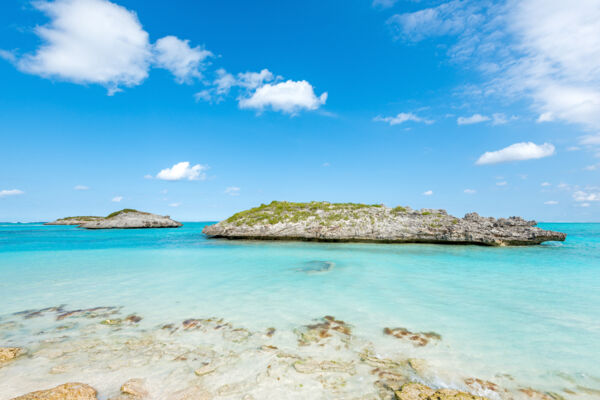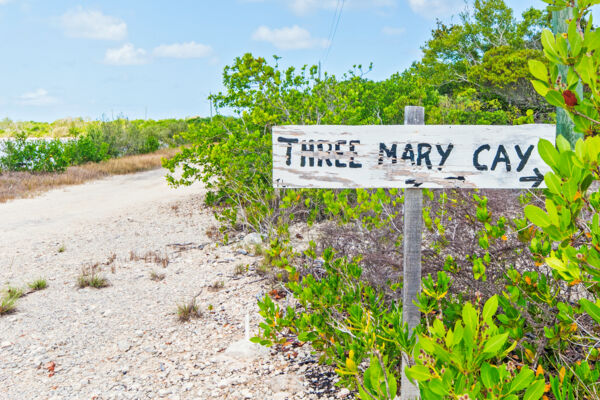Three Marys Cays North Caicos

Three Marys Cays is a collection of three small limestone ironshore rocks found close off the northeast coast of North Caicos. Together, the cays are the northernmost land in the Turks and Caicos. The general area is quite scenic and uninhabited, making it a popular spot to visit for day trips, picnics, and beachcombing.
Like much of the coastline on the island, water conditions are typically mild and suitable for swimming (albeit often with a bit of wind chop). There can be a bit of floating seaweed at times, yet rarely enough to be bothersome.
This area is bordered by the beautiful Hollywood Beach to the east and Sandy Point Beach to the west.
When in the area of Three Marys Cays, you might want to explore the saline wetlands of Pumpkin Bluff Pond, Moore Hall Pond, and Mud Hole Pond. These systems support a wide range of wading and coastal birdlife, including great herons, yellow-crowned night herons, tricolored herons, reddish egrets, great egrets, ospreys, and several types of duck.
Groves of the hardy thatch palm (Coccothrinax inaguensis), which is native to the Turks and Caicos and Bahamas, can be found along the coast west of Three Marys Cays. These little palms offer scenic patches of shade.
Three Marys Cays are protected as a nature sanctuary, and it is a criminal offense to remove anything, litter, or otherwise damage the cays.
Snorkeling

The shore snorkeling on North Caicos isn’t great compared to the other main islands in the country—however, this location is the best easily accessible spot on the island. While snorkeling, you can see some coral, small colorful reef fish, and the occasional stingray.
Conditions here vary. On some days, poor visibility caused by wind and light surf make it totally unsuitable for snorkeling. Check the wind forecast for a prediction of conditions. Generally, if the breeze is less than 10 knots (12 mph or 18 km/h), the ocean will likely be calm and clear.
As with many of the limestone coasts, the rock of the cays has been undercut by the action of the ocean to the high tide point. In some places, the rock overhangs almost 12 feet (3.6 m). Chitons, mollusks, and sea urchins make the ledges and crevices their home, adding to the underwater menagerie.
Due to the overhangs, it’s actually quite difficult to climb onto the cays. The limestone is very sharp and you can be seriously injured.
Getting to Three Marys Cays

Until recently, Three Marys Cays could only be reasonably accessed from the Whitby part of North Caicos. Due to road improvements, it’s now easiest to drive from Sandy Point.
Follow the road out of Sandy Point Marina for 0.7 miles (1 km) and then turn left onto the unpaved road. This road doesn’t have a name or sign at this time, but has been resurfaced. You’re on the right road if you can drive more than 1,000 feet (300 m).
Continue for 1.85 miles (3 km), and you should see the small sign for Three Marys Cays on your left. Turn onto this one-lane track and follow it for 2,000 feet (610 m) to Three Marys Cays. This track will have an abrupt left, and then a right before arriving at the cays.
The road that leads to Three Marys Cays isn’t in the best condition, yet can be traversed by any of the island’s rental cars if you take it at a slow pace.
Three Marys Cays can be a little difficult to find—be sure to look for the small sign.
